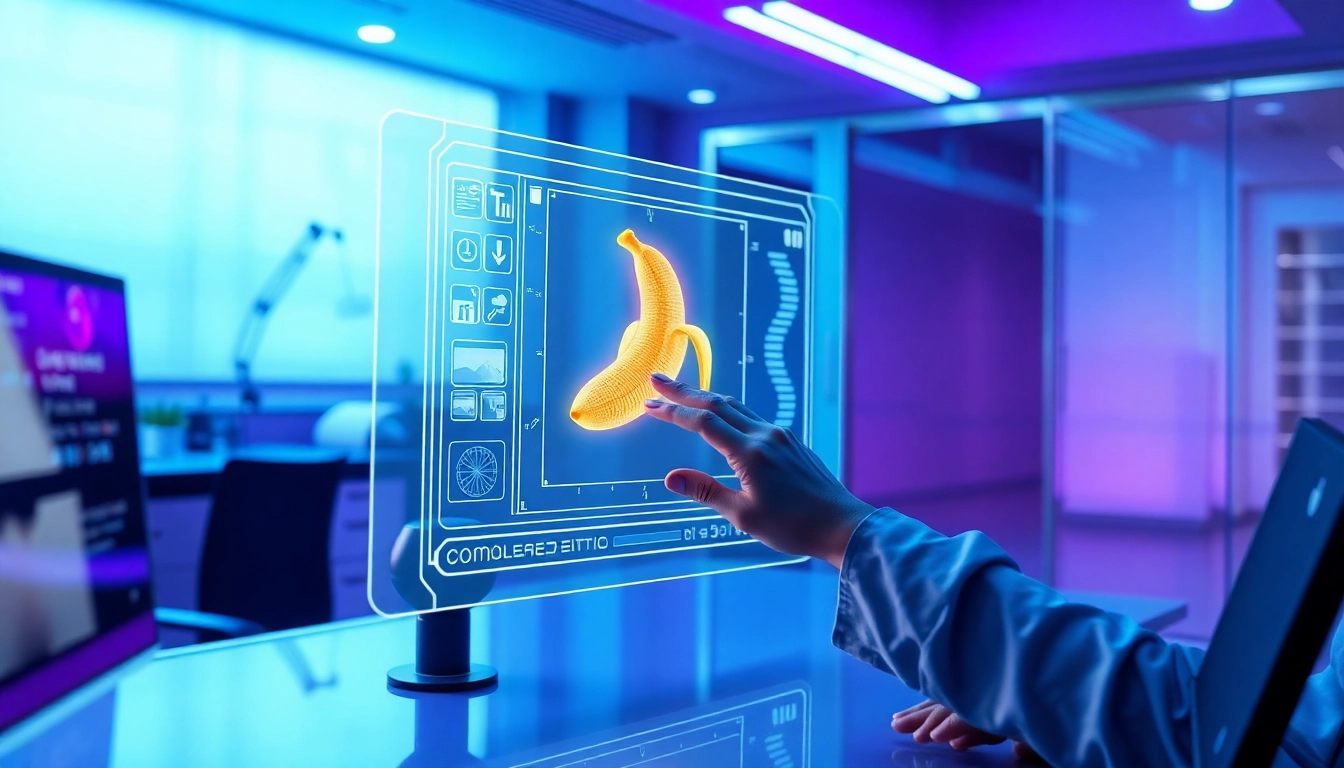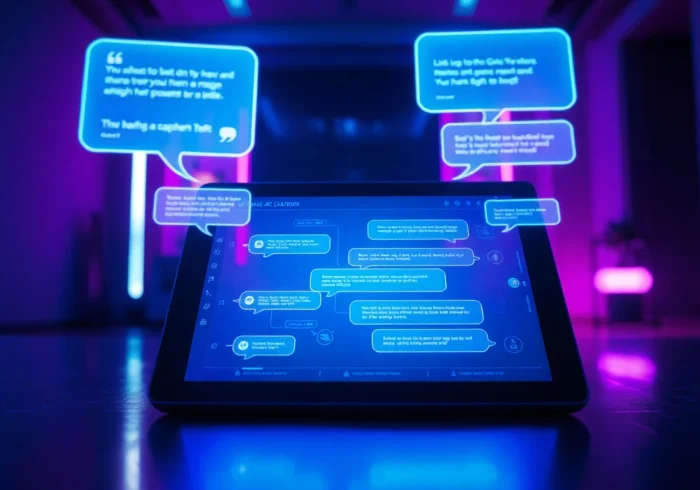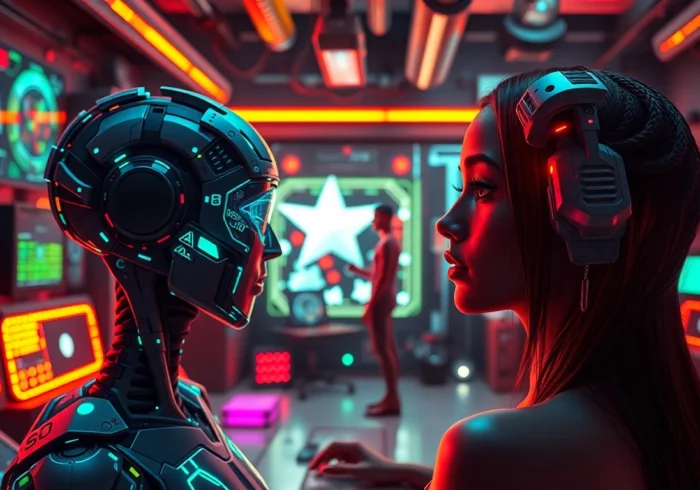Introduction to Nano Banana AI: The Future of Image Editing
In the rapidly evolving world of artificial intelligence, breakthroughs in visual creativity tools are transforming how we create, edit, and perceive images. Among these groundbreaking innovations stands nano banana, an AI image editing platform that is positioning itself as a revolutionary force in the industry. Unlike traditional image manipulation tools that rely on basic edits and simple filters, Nano Banana AI claims to outperform all competitors through its advanced reasoning capabilities, deep contextual understanding, and logical processing. This article aims to explore what makes Nano Banana AI a paradigm shift, how it differs from existing solutions, and why it is poised to redefine the future of visual creativity.
What Makes Nano Banana AI Revolutionarily Different from Competitors
Distinguishing Features of Nano Banana AI
In the crowded field of AI-powered image editing, distinguishing features often come down to performance metrics, user experience, and technological sophistication. Nano Banana AI sets itself apart by emphasizing its ability to “think” about images in a human-like manner. While platforms such as Flux Kontext and Gemini 2.0 Flash provide basic editing functions—like background removal, color adjustments, or simple object manipulations—Nano Banana AI offers a far more comprehensive and intelligent approach.
According to its core messaging, Nano Banana AI leverages advanced reasoning, perfect consistency, and 3D spatial awareness to not just edit images but to understand the intent behind each modification. This means that when a user asks to change the background, alter the perspective, or adjust lighting, the AI comprehends the context, maintains the integrity of the subject, and produces results that are indistinguishable from real-world photography. Its ability to analyze complex scenes, preserve spatial relationships, and adapt to nuanced instructions places it in a league of its own.
Performance Metrics and Accuracy
One of the most compelling claims made by Nano Banana AI is its high accuracy rate—ranging from 95% to 99%—which vastly outperforms competitors that typically deliver between 20% to 70% accuracy. This leap in performance is not just about pixel-perfect edits; it reflects superior understanding, logical reasoning, and contextual awareness embedded within the AI’s architecture. For users, this means fewer edits, less time spent correcting mistakes, and higher quality results that align precisely with their specifications.
Target Audience and Pricing Structure
Recognizing the diverse needs of users, Nano Banana AI offers a flexible three-tier pricing structure: $29, $49, and $79 per month, with enterprise options available for large-scale organizations. This tiered approach ensures accessibility for casual creators, professional designers, and large corporations alike. The platform’s emphasis on performance justifies the investment, promising a significant boost in productivity, creativity, and output quality.
Deep Dive into Advanced Reasoning and Contextual Understanding
The Core of Nano Banana AI: Human-Like Reasoning
At the heart of Nano Banana AI’s revolutionary capabilities lies its advanced reasoning engine, which mimics human cognition in understanding images. Unlike traditional AI models that focus solely on pattern recognition or superficial modifications, Nano Banana AI analyzes the entire scene, grasping the relationships between objects, background elements, and lighting conditions.
This deep understanding allows Nano Banana AI to perform complex edits—such as changing an object’s position in 3D space, maintaining consistent shadows, or adjusting perspective—without breaking the realism or coherence of the scene. For example, if a user requests to replace a sky while retaining the original lighting and shadows on objects, Nano Banana AI comprehends the scene’s context and executes the change seamlessly.
Logical Reasoning in Image Editing
Beyond spatial awareness, Nano Banana AI employs logical reasoning to interpret user instructions and generate appropriate edits. This means that ambiguous or complex requests—like “make the subject look happier” or “adjust the scene to appear during sunset”—are processed with an understanding of nuance and intent. The AI evaluates the scene’s context, infers the desired outcome, and applies modifications that align with real-world physics and aesthetics.
Maintaining Consistency and Coherence
Consistency is a significant challenge in AI image editing, especially when multiple edits are involved. Nano Banana AI excels in maintaining coherence across edits—preserving the identity of subjects, ensuring lighting matches, and avoiding artifacts or distortions. This consistency is vital for professional workflows, where multiple images or complex compositions require reliable and repeatable results.
The Technology Behind Nano Banana: 3D Spatial Awareness and Logical Processing
3D Spatial Understanding
One of the platform’s most impressive technological feats is its 3D spatial awareness. Traditional 2D image editing tools often struggle to interpret depth, perspective, or spatial relationships accurately. Nano Banana AI, however, incorporates 3D modeling principles, enabling it to understand how objects relate to each other in space.
This 3D comprehension allows the AI to perform perspective-based edits—such as changing an angle or simulating depth—without losing realism. For instance, when a user asks to “rotate the object,” the AI calculates how the object would appear from different viewpoints, adjusting shadows, reflections, and proportions accordingly.
Logical Reasoning and Scene Analysis
Combining 3D spatial awareness with logical reasoning, Nano Banana AI can infer the cause-and-effect relationships within an image. It recognizes that moving an object affects shadows and reflections, and it adjusts these elements accordingly. When changing backgrounds, it understands how light interacts with foreground objects and adapts shadows and highlights to match the new environment.
Artificial Intelligence Architecture
The backbone of Nano Banana AI likely involves a fusion of deep neural networks, probabilistic reasoning models, and spatial computation algorithms. These components work together to analyze input images, interpret complex user requests, and generate high-fidelity edits. The platform’s ability to perform real-time, nuanced modifications suggests an optimized architecture designed for speed, accuracy, and scalability.
Applications and Use Cases: From Casual Creators to Large Enterprises
Creative Professionals and Content Creators
For individual artists, photographers, and social media influencers, Nano Banana AI offers an intuitive platform to generate stunning visuals quickly. Whether it’s refining a portrait, creating a surreal scene, or enhancing product images, users can leverage its advanced reasoning to achieve professional results without extensive editing skills.
Commercial and Marketing Use
Businesses aiming to produce high-quality marketing visuals benefit from Nano Banana AI’s precision and consistency. E-commerce platforms can utilize it to create product images with perfect backgrounds, accurate color representation, and consistent lighting. Advertising agencies can craft compelling scenes that require intricate edits, all while maintaining a natural look.
Entertainment and Media Industries
Film studios, game developers, and digital artists can employ Nano Banana AI for scene composition, character editing, and visual effects. Its 3D spatial capabilities facilitate realistic modifications, supporting immersive storytelling and high-fidelity visual effects.
Large-Scale Enterprises and Automation
For organizations managing vast image libraries, Nano Banana AI offers automation and scalability. Its ability to perform complex edits at scale reduces manual labor, accelerates workflows, and maintains uniform quality across projects.
Comparing Performance: Accuracy and Consistency Metrics
Performance Benchmarks Against Competitors
According to internal data and user feedback, Nano Banana AI consistently achieves accuracy levels between 95% and 99%. In contrast, competing tools like Flux Kontext and Gemini 2.0 Flash hover around 20% to 70%, especially on complex tasks involving multiple objects, perspectives, or lighting conditions.
This superior performance translates into fewer revisions, less manual correction, and higher confidence in the final output. For professional workflows, this efficiency significantly reduces project timelines and enhances creative freedom.
Consistency Across Edits
Beyond raw accuracy, Nano Banana AI excels in maintaining visual and contextual consistency across multiple edits. For example, when changing backgrounds or adjusting lighting in a series of images, the platform preserves subject identity, shadows, and spatial relationships, ensuring a cohesive visual narrative.
User Satisfaction and Real-World Results
Feedback from early adopters indicates that Nano Banana AI’s results are often indistinguishable from real photographs, especially in complex scenarios involving reflections, shadows, and perspective shifts. This level of fidelity is crucial for high-stakes applications like advertising, product visualization, and digital art.
The Ethical and Creative Implications of AI-Powered Image Manipulation
Ethical Considerations
With great power comes great responsibility. Advanced image editing AI like Nano Banana raises questions about authenticity, misinformation, and digital manipulation ethics. While it democratizes creative expression, it also necessitates responsible usage to prevent misuse, such as deepfakes or deceptive content.
Creative Opportunities and Challenges
On the positive side, Nano Banana AI empowers artists and brands to push creative boundaries—crafting visuals previously impossible or prohibitively expensive. It opens new avenues for storytelling, product design, and visual communication. However, it also challenges traditional notions of authenticity and originality, prompting a reevaluation of what constitutes genuine art or representation.
Regulation and Future Frameworks
As AI-driven image editing matures, industry standards and regulations will likely evolve to address transparency, consent, and accountability. Platforms like Nano Banana AI must incorporate safeguards, watermarking, and usage guidelines to foster ethical practices and protect users and subjects alike.
Future Trends: The Evolution of AI in Visual Creativity
Integration of Multi-Modal AI
Future developments will see Nano Banana AI integrating with other AI modalities—such as text understanding, voice commands, and real-time video processing—to create more immersive and interactive editing experiences. Imagine describing a scene verbally and having the AI execute complex modifications instantly.
Enhanced Realism and Virtual Reality
As VR and AR technologies advance, AI tools like Nano Banana will play a crucial role in generating realistic virtual environments, avatars, and assets. Their ability to understand and manipulate 3D spaces will facilitate seamless blending of digital and physical worlds.
Personalization and Adaptive Learning
AI models will become more personalized, learning individual user preferences, styles, and workflows to deliver tailored editing suggestions and automations. This adaptability will make the platform even more intuitive and efficient.
Broader Accessibility and Democratization
With decreasing costs and increasing user-friendliness, advanced AI image editing tools will become accessible to a broader audience, democratizing high-quality visual content creation and enabling new forms of artistic expression worldwide.
How to Get Started with Nano Banana AI: Pricing and Accessibility
Subscription Tiers and Plans
Nano Banana AI offers three primary subscription tiers: $29, $49, and $79 per month, designed to cater to varying needs. The basic plan provides access to core features suitable for hobbyists and small projects, while the higher tiers unlock advanced functionalities, higher resolution outputs, and priority support. For large organizations, enterprise packages are available, offering customization, API access, and dedicated support.
Ease of Use and Platform Accessibility
The platform is designed with user experience in mind, featuring an intuitive interface that allows users to upload images, specify editing instructions, and preview results in real-time. Compatibility across devices—desktop, tablet, and mobile—ensures that creators can work seamlessly from any location.
Getting Started and Learning Resources
New users can explore tutorials, webinars, and community forums to familiarize themselves with Nano Banana AI’s capabilities. The platform also offers sample projects and guided workflows to accelerate mastery and integration into existing creative processes.
Conclusion: The Paradigm Shift in Visual AI and Creativity
In summary, Nano Banana AI represents a significant leap forward in the realm of AI-powered image editing. Its unique combination of advanced reasoning, deep contextual understanding, 3D spatial awareness, and logical processing positions it as the most intelligent and capable tool available today. This technological revolution not only enhances the efficiency and quality of visual content creation but also challenges conventional notions of authenticity, originality, and artistic expression.
As AI continues to evolve, platforms like Nano Banana AI will pave the way for new creative possibilities, empowering everyone—from casual hobbyists to global enterprises—to produce stunning, realistic, and meaningful visuals. For those interested in the cutting edge of visual AI, exploring ai nano banana is an essential step toward understanding the future of digital creativity and innovation.



